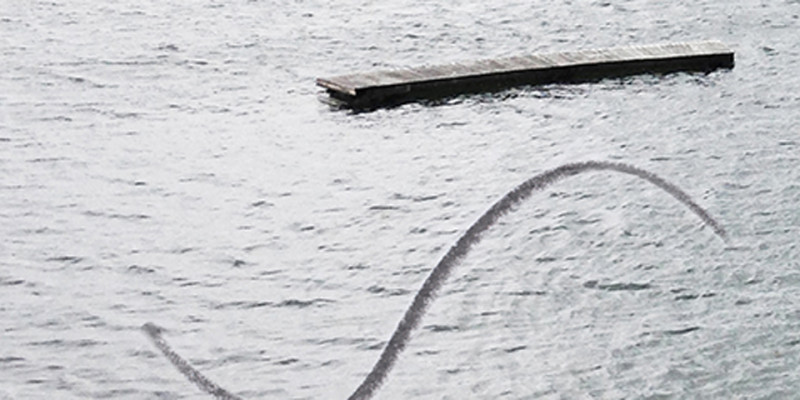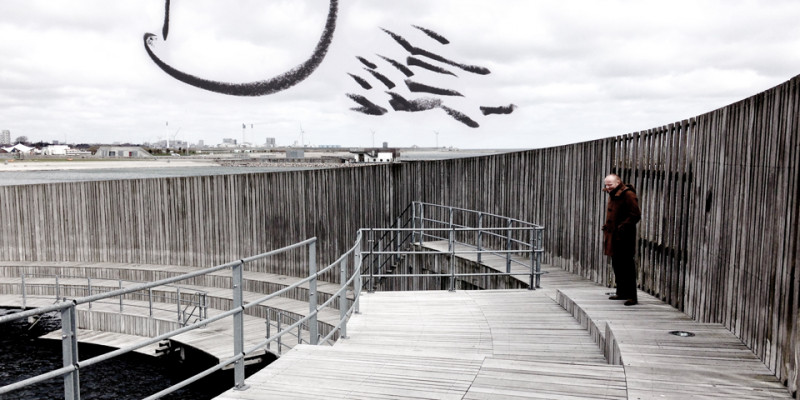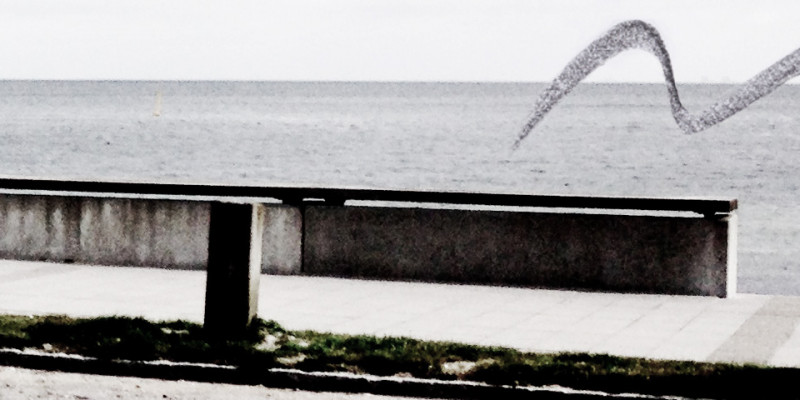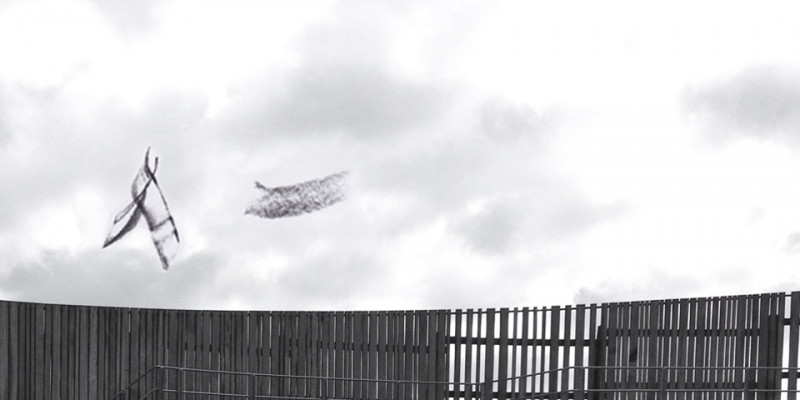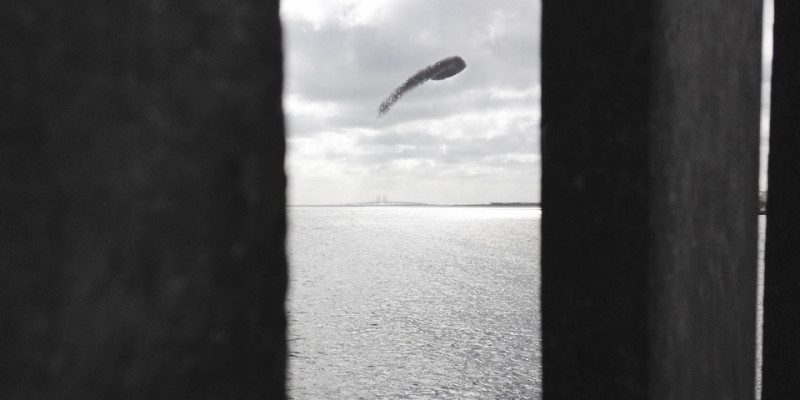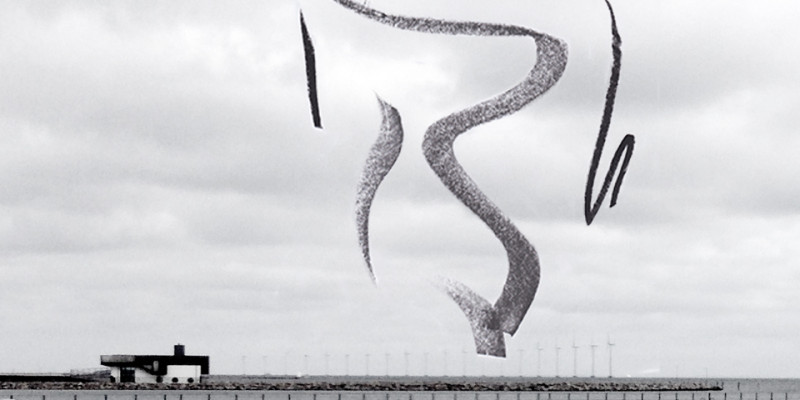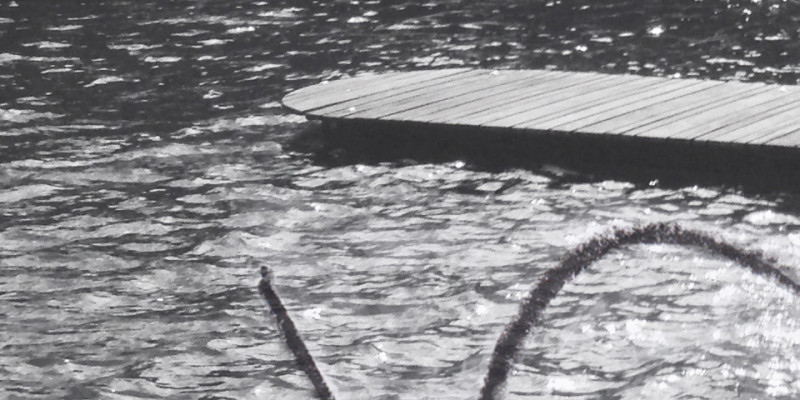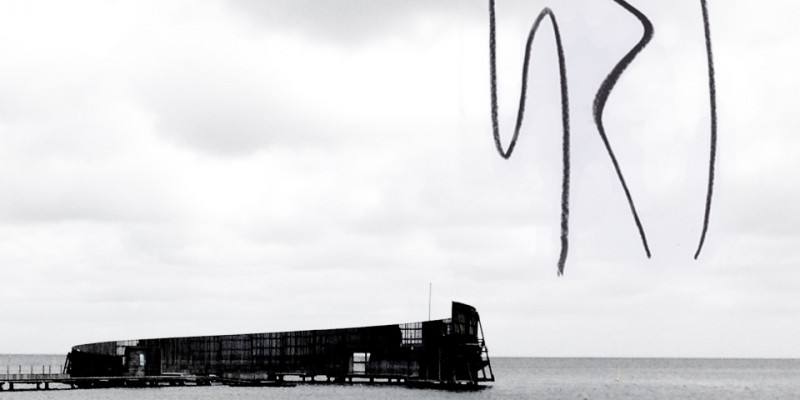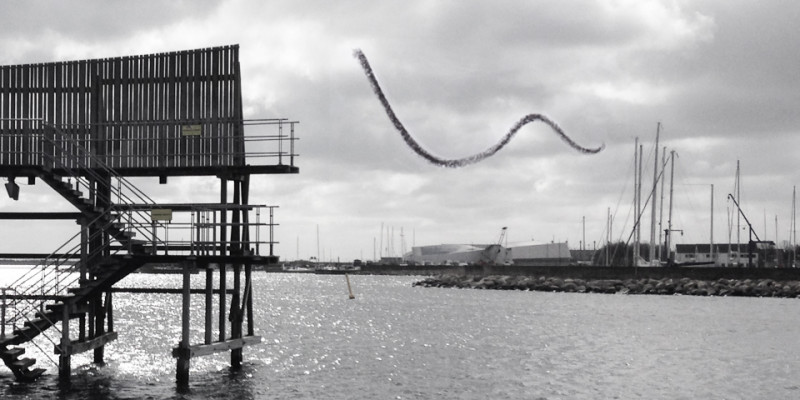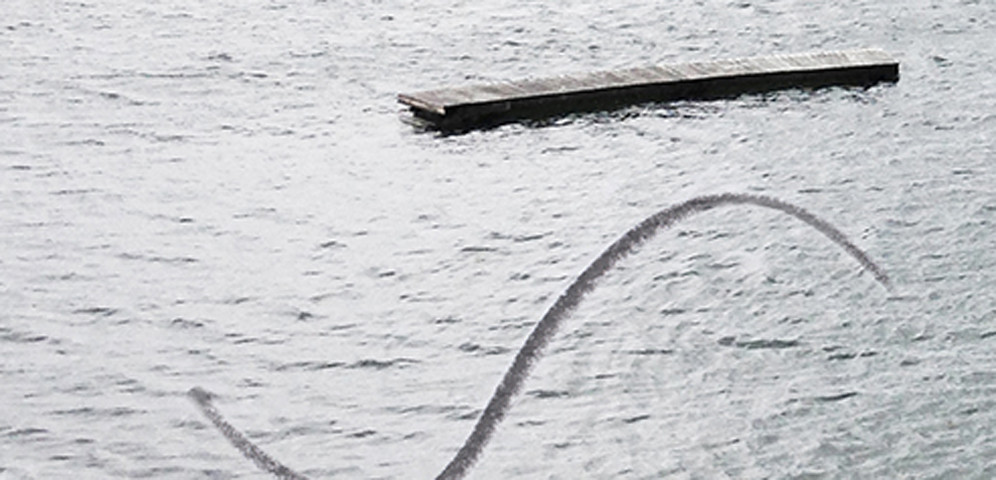
Audio Papers – a manifesto
With this special issue of Seismograf we are happy to present a new format of articles: Audio Papers.
Audio papers resemble the regular essay or the academic text in that they deal with a certain topic of interest, but presented in the form of an audio production. The audio paper is an extension of the written paper through its specific use of media, a sonic awareness of aesthetics and materiality, and creative approach towards communication. The audio paper is a performative format working together with an affective and elaborate understanding of language. It is an experiment embracing intellectual arguments and creative work, papers and performances, written scholarship and sonic aesthetics.
For this special issue of Seismograf, the guidelines for authors and peer reviewers mainly focused on the format. Topic-wise we encouraged dealing with site-specificity and topics related to the island Amager, but other topics were welcomed as well. From our experience with the development of the concept, the workshops, the peer reviews and the editorial process, we suggest the following statements as a germinal manifesto for the audio paper:
AUDIO PAPER MANIFESTO
-
The audio paper affords performative aesthetics.
-
The audio paper is idiosyncratic.
-
The audio paper is situated and partial.
-
The audio paper renders affects and sensations.
-
The audio paper is multifocal; it assembles diverse and often heterogeneous voices.
-
The audio paper has multiple protagonists, narrators and material agencies.
-
The audio paper brings aesthetics and technologies together in mediation.
-
The audio paper is a constituent part of larger ecologies.
Ad. 1 The audio paper affords performative aesthetics
The audio paper is experimental in character and is positioned against the conventional written paper. The audio paper insists on awareness during the dissemination of the academic argument; it is performative, and it is acutely aware of its own means of presentation and representation.
The academic field of performance studies can contribute to bridging diverse knowledge disciplines and shaping them into experimental yet coherent forms. As formulated by American ethnographer Dwight Conquergood (1949-2004): “The constitutive liminality of performance studies lies in its capacity to bridge formerly segregated and differently valued knowledges, drawing together legitimated as well as subjugated modes of inquiry” (Conquergood 2002:151).
Similar to Conquergood’s definition of performances studies, the audio paper as an academic discipline has the potential to assemble heterogeneous and segregated knowledge disciplines. For instance, it combines the rationality of language and speech with the sensation and affective materiality of the voice, or it incorporates the sound aesthetics of various environments, landscapes and spaces to underline and strengthen the academic argument. In several ways such performative aesthetics of the audio paper are related to 20th century avant-garde aesthetics. Techniques of Verfremdung, awareness of materiality, and everyday aesthetics are all drawn upon to develop means of expression.
The performative aesthetics of the audio paper are closely related to technology. Technology and mediations create a new subject of knowledge. Jon McKenzie addresses the notion of performative objects: They do not occupy a single “proper” place in knowledge; there is no such thing as the thing in itself. Instead, objects are produced and maintained though a variety of socio-technical systems, overcoded by many discourses, and situated in numerous sites of practice” (McKenzie: Perform or Else, p. 18).
Audio papers as such can differ from the ones presented in this issue and are not to be understood as an establishable format. As the audio paper is performative and its proper place always differing, it must continuously be renewed: When the present audio papers become conventional, the audio paper will once again reconsider its format and move towards new investigations, once again bringing in new awareness to the work. In this sense, the oral and the soundscape can make language perform in differing ways. In this regard, the audio paper draws on the performativity of language in the broadest sense. English linguistic J.L Austin notes how language performs through contexts. Thus, meaning is intrinsically bound to the situation. In the audio paper, sounds and soundscapes become frameworks in which language performs. Recorded sonic environments, the aesthetics and materiality, serve as a contextual situation in addition to the tone, physicality and timbre of the recorded voice. Such contexts support the narration or operate on their own, in contradiction to the presented statements and arguments.
By applying performative aesthetics, the audio paper recognizes and realizes both representation and presentation. On the one hand, the audio paper represents semantics: topics of listening, nature, new labour, cultural places and even interpretation of works of art. On the other, the audio paper presents itself in mediation. Mediation contributes to the performative gesture and is self-referential. The mediation reveals meanings through, for instance, the physicality of sound or the dramaturgy by which the soundscape, voice and theses are put together. Or, as Holger Schulze states in his lecture, “in performing you take new and different, exploratory and analytical, disruptive or harmonizing actions. You provoke new situated events; you generate dissent and consent, ruptures and new experiences, new conclusions and new unfolded claims. Finally you go for transmitting.”
Ad. 2 The audio paper is idiosyncratic.
While academic knowledge often tries to avoid the idiosyncratic, the audio paper is deeply rooted in idiosyncrasies. It investigates environments – the social, the material and the sensorial – by taking several dynamics of the perceptual and analytical process into account. The audio paper welcomes this. Inventions often occur in attempting to formulate or mediate through a media. The researcher always makes choices, also when writing, but this process of experimenting and choosing becomes palpable when transferred into a new format.
The audio paper is related to genres such as reportage, montage and feature. Reportage, as it relates to a certain place and the issues related to it; montage, through its awareness of mediations and any meta-reflexive components; feature, as it proposes a subjective and sensory approach to an issue. But the audio paper differs from the above three genres through its concern with the idiosyncratic: formal, auditory, inventive, experimental and investigatory idiosyncratic. The audio paper is an answer to Schulze’s rhetoric question, as it does “identify our respective, individual and sensory idiosyncrasies as the actual core elements in any historical as well as future research methodologies.”
Ex: The New "Amagerkaner", Between Maps and Territories, Hearing on the Verge
Ad. 3 The audio paper is situated and partial.
As an academic format, the audio paper can contribute with its “partial and situated truths” (see Haraway, 1988), a knowledge production that is qualitatively attentive to the various situations of research and their inherent aesthetic and sensory potentials. Situated and partial knowledge also implies that the production is restricted by its means of production: technologies, tools, media, places and contexts. The audio paper draws attention to the knowledge situation by, for instance, reflecting on the means of production. As sound material is visceral, the audio paper also is aware of different modes of expression and the aesthetic potentialities of sounds. Situated implies that the sound work is composed with sound [technologically extracted] from the environments with which they engage: the radio studio, the harbor front, the island of Amager, or an imagined future.
Ex. "Like Sitting inside a Phone", Mountain Meets Urban Waterfront, A Sound Factory on Amager
Ad. 4 The audio paper evokes affects and sensations.
The audio paper works with sensory and affective modes of knowledge. Sound has a material quality. Language is rendered through the voice with its attunement (Massumi 2002) to the surroundings, its rhythms and pace. Feelings and sensations are present in the audio paper and work side by side with the semantics of language and sound. The aesthetic, material aspects of the audio paper produce affects and sensations in the listener. Affects are felt. What is felt could be the body of the soundscape, the body of the voice, or the feeling and sensing body of the listener while listening.
The tone and timbre of the voices used in the audio paper makes the narrator present. It affords feelings and sensations. Voice and tone thus perform meaning in the broad continuum between cognitive reason and bodily sensations.
Like affects, the audio paper is productive and emergent in the sense that it does not represent lived processes so much as it participates in actively shaping processes to help constitute them as facts. The audio paper works with affects and sensation to give the listener a bodily felt and sensed experience.
Academic knowledge in the audio paper is therefore felt, experienced and produced in temporal processes.
Ex. Through the Air with the greatest of Ease, Hearing on the Verge, Place Time (Sounds)
Ad. 5 The audio paper is multifocal; it assembles diverse and often heterogeneous voices.
The audio paper is – like 20th century avant-garde radio art, drama, literature and poetry – not necessarily narrated from the perspective of a one-dimensional protagonist. The audio paper’s research questions and arguments are developed within academic frameworks, while the presentation can take various forms. The audio paper hereby continually opens towards an integration of dramaturgical complexities that not only functions as a representational and performative tool, but also integrates the overall academic argument in the presentation itself.
Ex. The New "Amagerkaner", Between Maps and Territories.
Ad. 6 The audio paper has multiple protagonists, narrators and material agencies.
The audio paper is not limited to narrations performed by human beings. Not only humans act, also landscapes, objects, technologies and politics are rendered active agents (Latour 2005) in the audio paper. Austin’s concept of performative utterance, “speech acts,” (words are more than just words, they are causal actions with consequences depending on the context they are presented within), is not only a[n operating] principle reserved for language, but can be identified as operating within all other sounding agents as well (Salter 2010).
Ex. Mountain Meets Urban Waterfront, "Like Sitting inside a Phone".
Ad. 7 The audio paper brings aesthetics and technology together in mediation.
The audio paper is produced by means of digital audio technologies. With the field of Art and Technology in mind, technology – its function and dysfunction and the development and investigations generated – have demonstrated that technology is in itself a carrier of aesthetics (e.g. Klüver 2004). With reference to Bruno Latour (1999), Chris Salter explains it this way: “Technology does something in and to the world by modifying existing relations and constructing new ones between humans, tools, processes and the environment in which all are deeply entangled. ‘Techniques are . . . not means, [...] but mediators, means, and ends at the same time; and that is why they bear upon the social fabric’ (1999: 197)” (Salter 2010: xxxv).
In the case of the audio paper, this frame of understanding underlines the awareness that recording equipment, filtering, mixing, mastering and conversions are not neutral processes and tools. They are in themselves expressions of various actors and aesthetic means.
Ad. 8 The audio paper is a constituent part of broader ecologies.
The audio paper depends on diverse sound environments and human practices in its attempt to assemble aspects, narratives, phenomena and sensations of the world. Its dissemination and production depends on technology, which becomes a part of the expression and a key to information itself: “Technology does something in and to the world by modifying existing relations and constructing new ones between humans, tools, processes and the environment in which all are deeply entangled” (Salter 2010: xxxxv).
The audio paper is never conventional, as it always incorporates an awareness of the processes of research and technological production. It not only reflects its own research question/s, but reflects the reflection itself: the process of knowledge-production, the presentation and representation of language and voice, the narrative and dramaturgy, and the aesthetics of sound.
